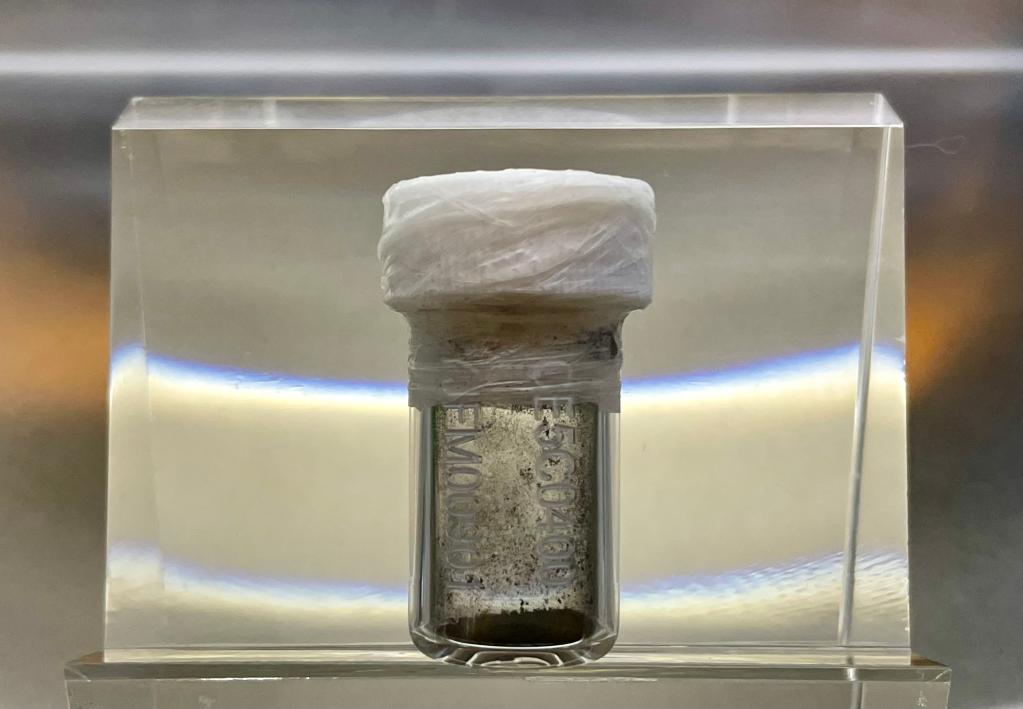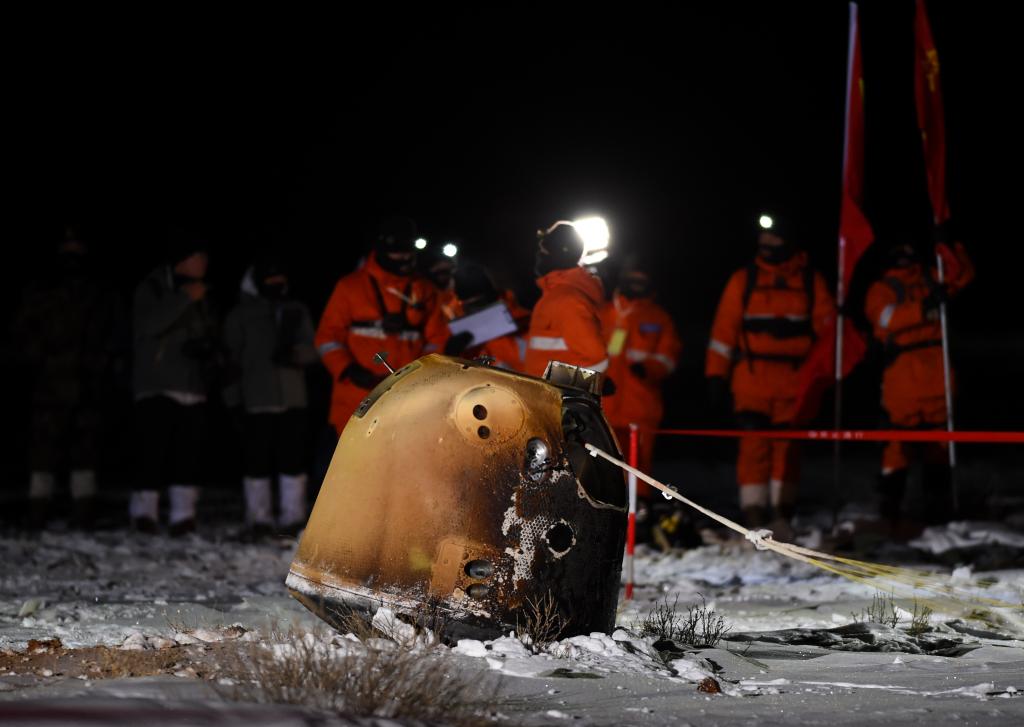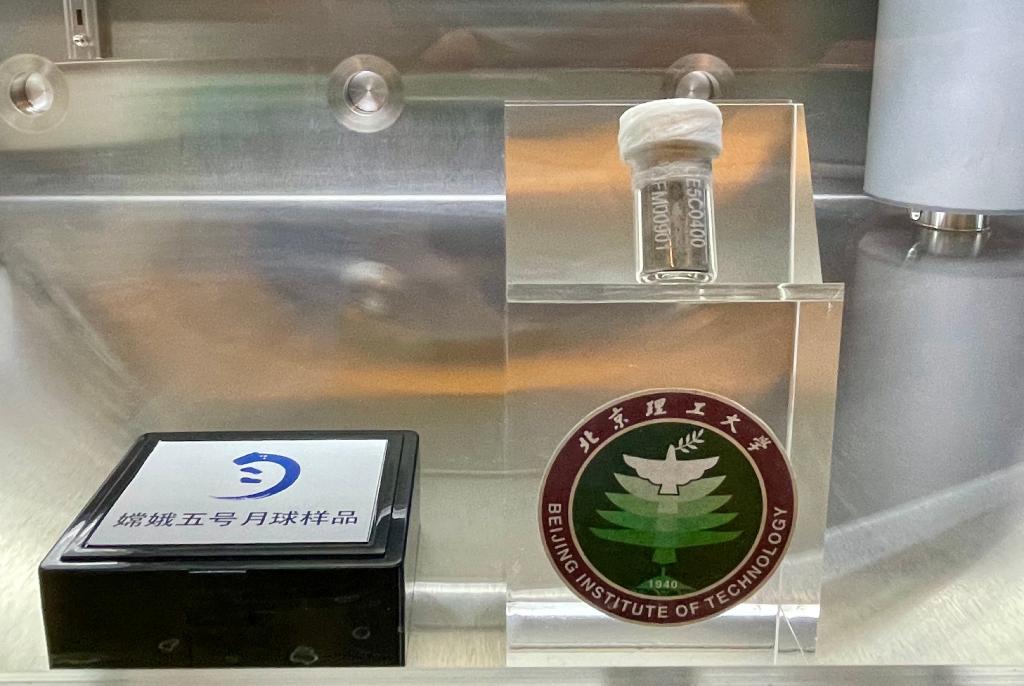China scientists will carry out research on the construction of lunar research stations.

Some moon samples brought back by Chang ‘e V received by Beijing Institute of Technology (photo taken on April 24). Xinhua News Agency reporter Zhao Xu photo
Xinhua News Agency, Beijing, April 27th (Reporter Zhao Xu) Recently, Beijing Institute of Technology officially received a 500 mg lunar sample approved by the National Space Administration. This sample was brought back by Chang ‘e V, which will be used for the analysis of lunar soil material characteristics and the research on key technologies of additive manufacturing.
On December 17, 2020, Chang ‘e V returned to Earth with 1,731 grams of lunar samples, and the research on the samples began immediately. In August, 2022, the Lunar Exploration and Space Engineering Center of the National Space Administration organized the fifth batch of lunar scientific research sample borrowing application review meeting in Beijing. After professional review, the application of Beijing Institute of Technology was approved.
Shenjun, a professor at the School of Mechanical and Vehicle Engineering of Beijing Institute of Technology, said that at present, relevant plans for the construction of lunar research stations have been laid out both at home and abroad, and his team will focus on the construction of lunar research stations to carry out pre-research. "Building a lunar research station in the future is equivalent to building a house on the moon. In view of the limitations of the current rocket carrying capacity and the upward cost of the earth and the moon, as far as possible, the moon soil is the main raw material that can be used. "

The picture shows the Chang ‘e V returner (photo taken on December 17, 2020). Xinhua News Agency reporter Peng Yuanshe
Shenjun said that the specific research will be divided into two steps. Firstly, the basic physical characteristics of lunar soil are studied and analyzed, including appearance, optical characteristics and electromagnetic characteristics. The second step, based on the analysis results, focuses on the analysis of the surface properties of lunar soil particles, and obtains the optimal preparation scheme to improve the stability of lunar soil-based raw materials and processes, that is, to find other best materials that can be molded after mixing with lunar soil, and to explore the corresponding optimal technical scheme of 3D printing, so as to find an ideal path for building a lunar research station with lunar soil as the core raw material.
"If the lunar soil is compared to cement, we must first study the characteristics of cement, then find sand and binder suitable for mixing with cement, and finally ensure that there is technology to make cement sand into bricks." Shenjun said that this sounds easy, but to truly obtain reliable lunar soil forming technology, it is necessary to solve the challenges of raw material compatibility, slurry stability and process reliability.

Some moon samples brought back by Chang ‘e V received by Beijing Institute of Technology (photo taken on April 24). Xinhua News Agency reporter Zhao Xu photo
For the scientific research team, every moon soil is extremely precious. The 500 mg lunar sample can’t be used to build the experiment itself. The research team used the existing materials on the ground to simulate the lunar soil material, and then combined with the analysis data of the real lunar soil, continuously optimized the raw material preparation method and construction process parameters.
"Beijing Institute of Technology will make full use of this 500 mg precious lunar sample, hoping to provide theoretical basis and technical support for the future construction of lunar research stations." Zhang Jun, academician of China Academy of Engineering and secretary of the Party Committee of Beijing Institute of Technology, said that the school will cooperate with relevant units in scientific research, personnel training, exchanges and cooperation, further promote the spirit of exploring the moon, and make contributions to the development and utilization of lunar resources and the peaceful use of space.
It is reported that with the approval of the National Space Administration, since the first batch of lunar scientific research samples were distributed on July 12, 2021, five batches of samples have been distributed to 98 scientific research teams, with a total of 198 copies of 65.1 grams. More than 60 achievements have been published in important academic journals at home and abroad, including revealing the mystery of the formation of young volcanoes on the moon, discovering high-content solar wind-induced water and discovering new minerals.